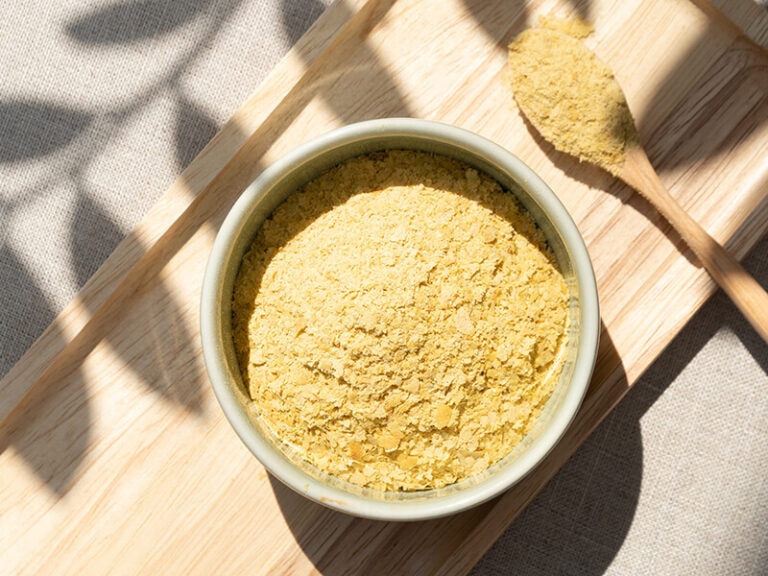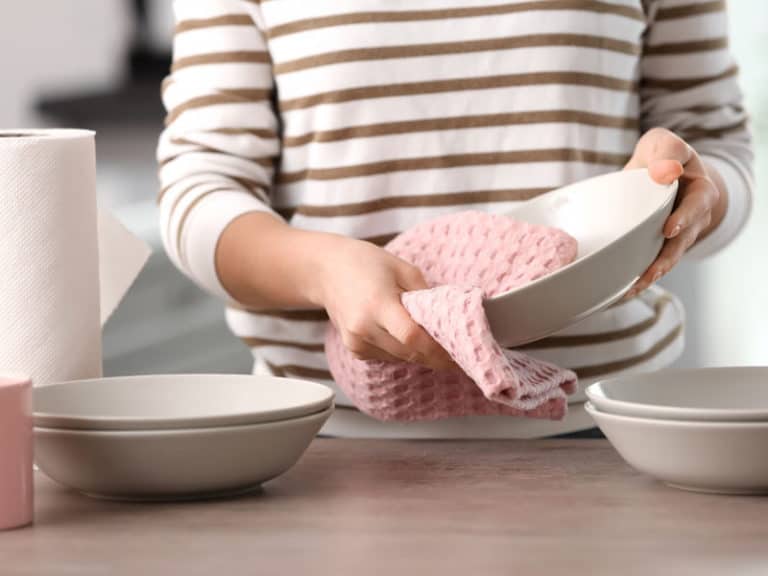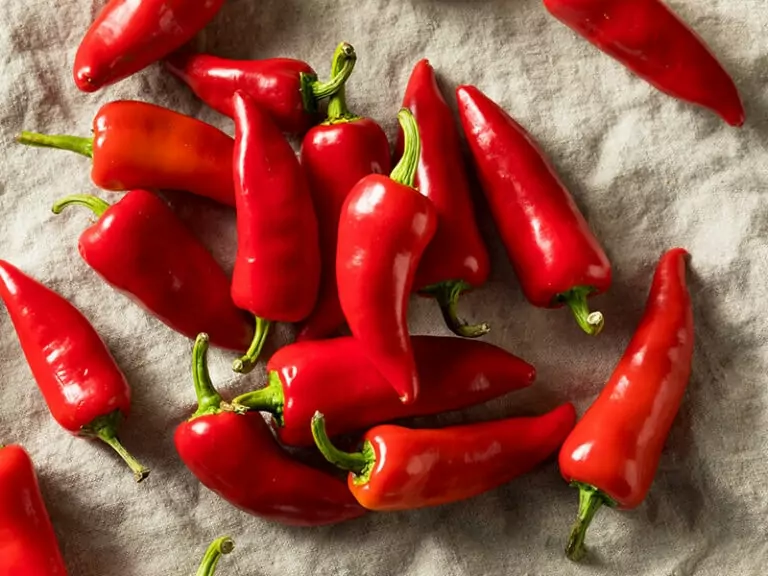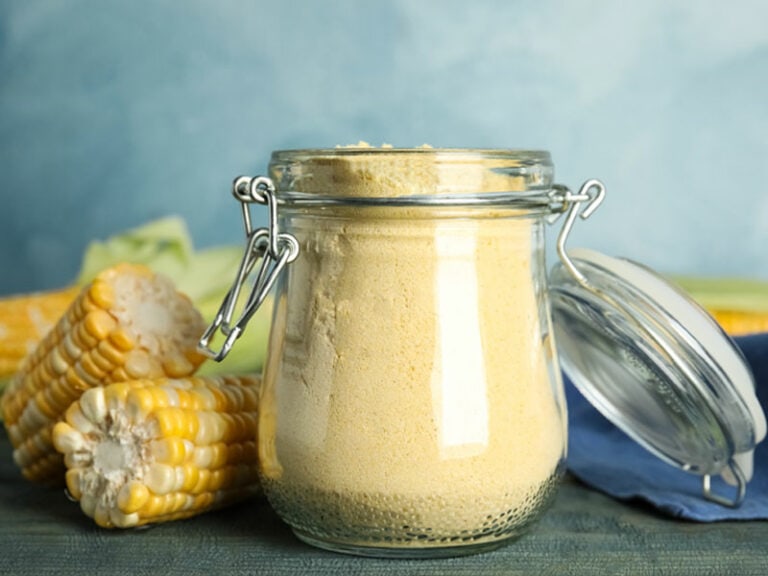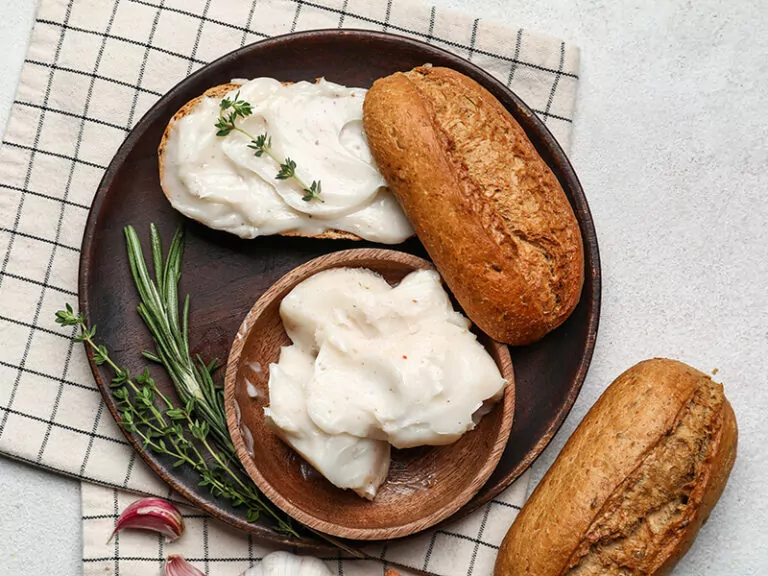Choosing the best noodles for stir fry is never an easy task, especially when you are new to this kind of food. When you walk across the noodle sections in supermarkets, it is easy to get overwhelmed by the large selection they offer.
But what I’m going to show you here will help you cope with that kind of circumstance. While noodles can turn into various flavorful courses, in this particular article, I will focus on stir fries only and bring you the best noodles you could ever choose!
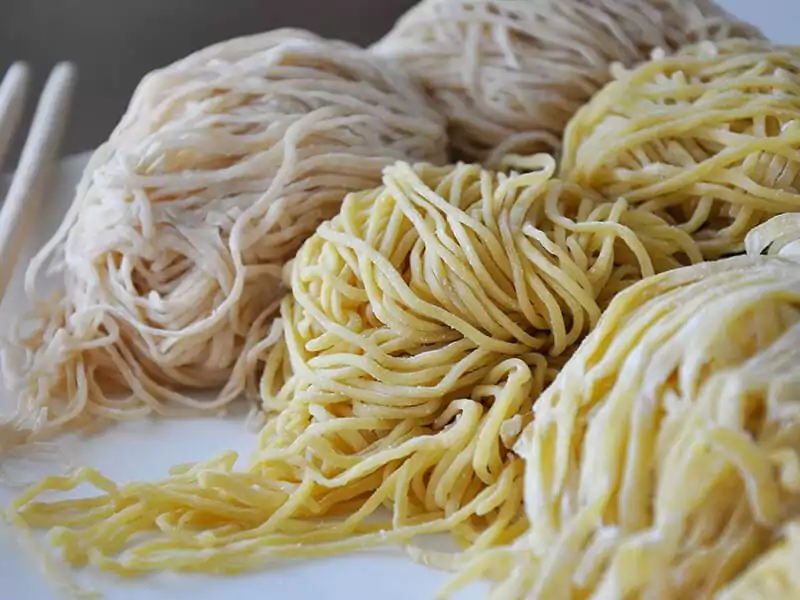
What Type Of Food Are Noodles?
These beautiful shiny strands can trigger anyone’s hunger. I am sure many of you have eaten noodles at least once in your life. But how much do you know about noodles?
Noodles Are Staple Food
Noodles are more than just food in Asia: they have cultural significance as well. Despite debates about their origins (with ancient China and the Mediterranean region as promising candidates), they are certainly an essential part of the Asian traditional diet.
Though many people refer to noodles as “pasta-like dishes”, pasta is actually the descendant of ancient noodles from Asia. You can sort noodles into many categories. For instance, according to processing technologies, there are 6 types of noodles:
- Fresh raw noodles: contain 32 – 38% moisture and do not need drying.
- Dried noodles: have a long shelf life and require to be soaked in water before cooking.
- Frozen noodles: People make them by using air blast technology or a contact freezer to ice up raw or cooked noodles at – 40° F for 30 minutes.
- Parboiled noodles: Many cooks love to cook noodles in boiling water for a very short period of time before using them for other dishes so that the noodles will have a more palatable texture.
- Steamed noodles: need cooking in a steamer until they reach the required moisture content.
- Instant noodles: usually fried or air-fried; you must rehydrate this type of convenience food before consuming it.
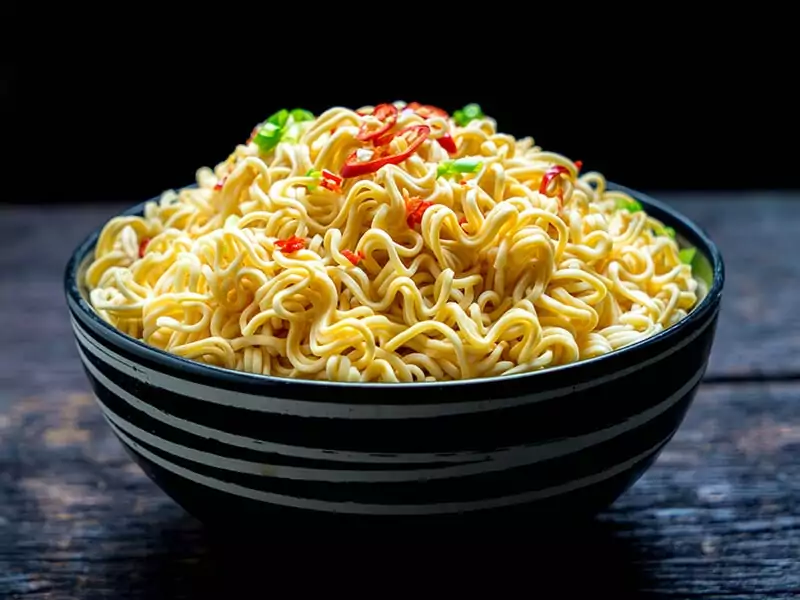
How Are Noodles Made?
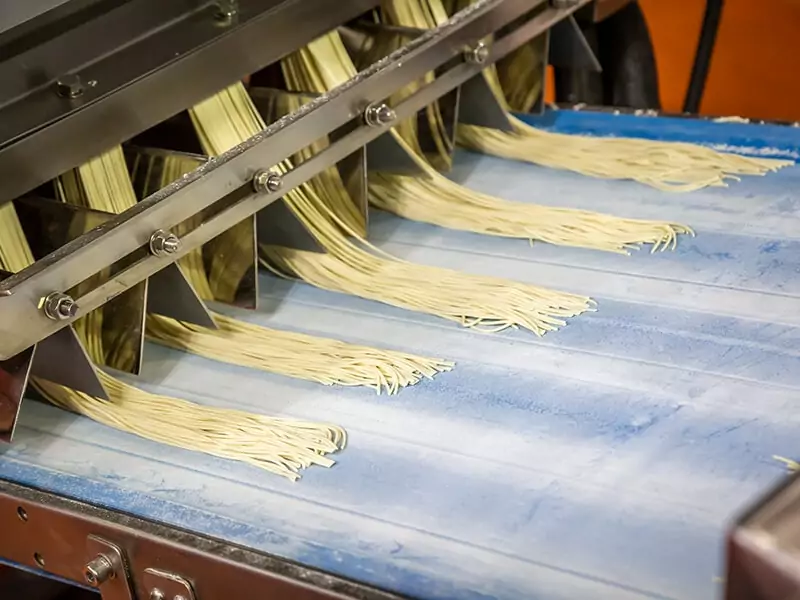
It all started with unleavened flour and water. Depending on the types of noodles, the ratio between the two changes accordingly. Once the dough is perfectly mixed, let it rest so that it can be more bendable.
Next is the flattening process. You can use a rolling pin to spread the dough out until it reaches the thickness that you want, then cut it into strands.
It may sound simple, but there are so many things that can go wrong. For example, the dough is too dry or too moist due to improper ratio.
These days, noodles can be made by automatic machines. Although these engines are able to perform more consistently, the noodles may not have the same excellent taste as handmade or homemade noodles.
Do you want to see a full demonstration of how to make Chinese noodles? Check it out here!
Noodles or Pasta? – Mainstay Key Differences
If you cannot tell the difference between pasta and noodles, don’t worry: many people have the same problem. In short, pasta is a type of noodle, while noodles have a bigger scope. The main differences come from the ingredients and the ways people process them.
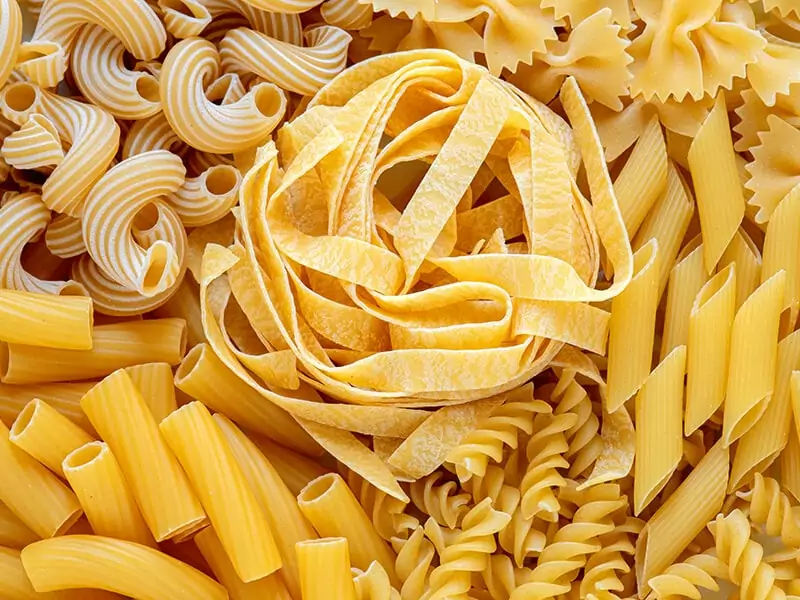
Ingredients
Wheat flour is the most common ingredient in making noodles. But you can use all types of flour, such as rice, yam, potato, acorn, buckwheat, or mung bean flour, to make this kind of food.
Pasta is made from unleavened dough – a combination of durum wheat flour, eggs, and water. Still, in some places, people will use common wheat as durum is too expensive.
When making noodles, people intentionally add salt to bind the dough better. Therefore, it is not necessary to add extra salt while cooking them. In contrast, most pasta is salt-free, so you may want to add a little bit of salt to intensify the flavor.
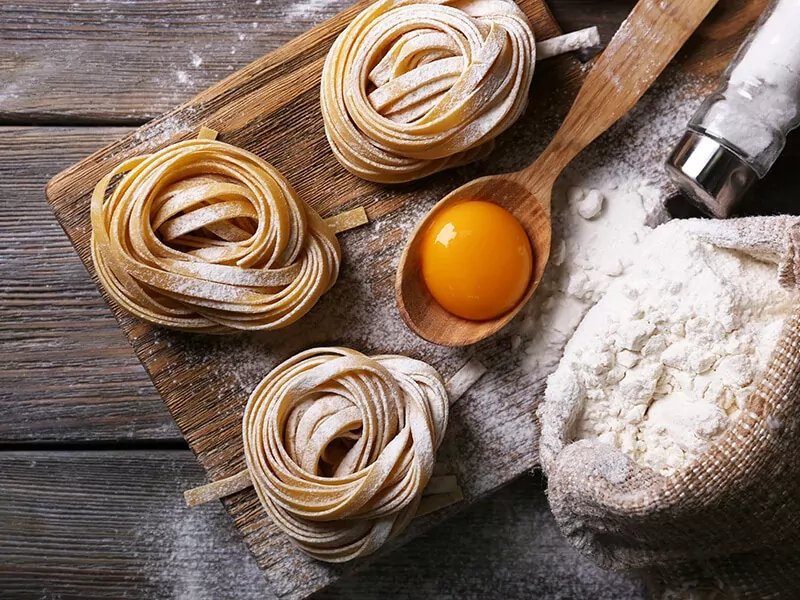
Shapes
Noodles and pasta appear in various shapes. Although many types of noodles are cut into shells, sheets, waves, or tubes, long strips are the most common type.
By contrast, pasta has more than 300 shapes, and it is difficult to say which one is the most popular. The use of each type depends on the dish you are making.
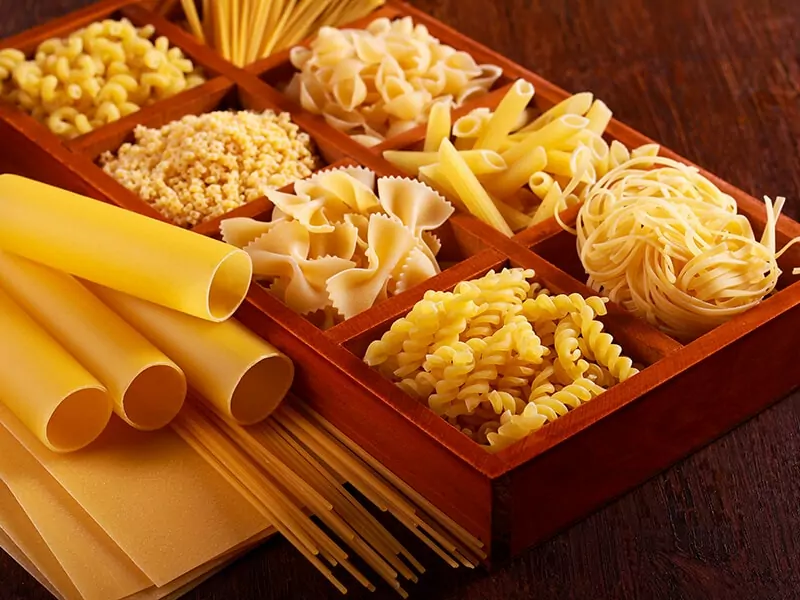
Types Of Processing Involved
Processing technologies required for pasta and noodles are also different. Noodles have to go through a flattening process and then, by different methods, cut into individual noodle strands.
To make pasta, you need to extrude pasta dough through a mold so that it becomes the desired shape.
Learn how to make pasta with a few ingredients and no expensive equipment from this tutorial.
What Kinds Of Noodles Go Best With Stir Fry?
Stir fry dishes require high heat and a lot of tossing and turning. Thus, the chosen noodles must have some characteristics to withstand all of that.
Texture
The first criterion is texture. Soft noodles, like egg noodles or soaked rice vermicelli noodles, will snap and turn slimy if you are not deft enough at cooking. Therefore, in case you are new to this kind of food, thick and chewy noodles with a springy texture are easier to prepare.
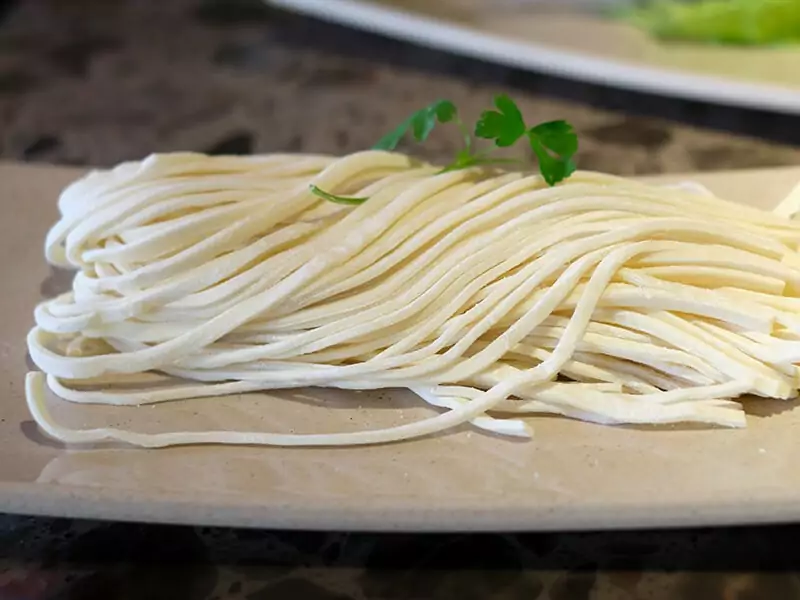
Shape
This factor can affect the mouth feel you get from noodles. There are flat and round noodles. Pick the latter if you expect to slurp up your noodles easier.
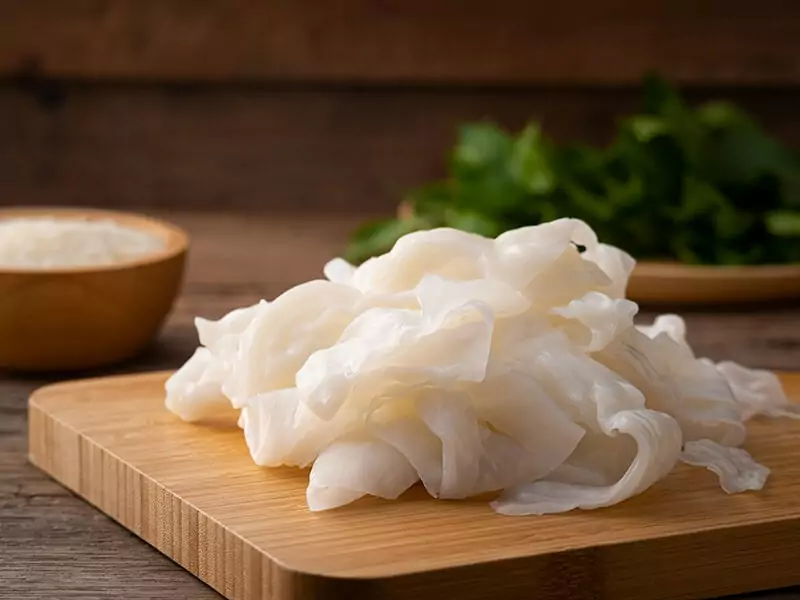
Fresh Noodles Vs. Dry Noodles
Fresh noodles are superior to dry ones in flavor. Still, many people opt for dry noodles as they can last longer. Other than that, there are not many dissimilarities between them.
Fresh noodles do not need rehydrating, so you only have to blanch them. As for dry noodles, you must cook them in boiling water for 3-6 minutes. A small tip for you is that you can soak dry noodles in water before boiling them to shorten the process.
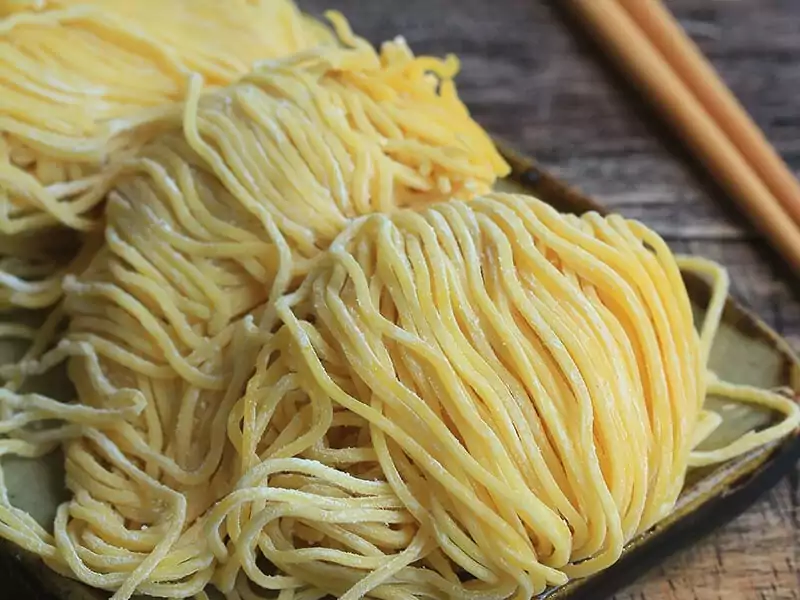
Keep These Prestigious Noodles Brands In Mind
The brands I mention below are well-known for their Asian-inspired noodle products. Their products will surely give your meal a fresh breath of Asian deliciousness!
Simply Asia
One of the most popular brands has to be Simply Asia. Bringing the quintessence of Asian cuisine to customers, this organization wins the love of thousands of people. From Vietnamese pho to Chinese lo mein and Japanese ramen, you can find them all at Simply Asia!
Annie’s Chun
The bold and vibrant flavors of Asian food are the target of Annie’s Chun. It claims to make the most simple and easy-to-prepare dishes with authentic taste. Whether they are dried noodles, noodle bowls, or organic noodles, Annie’s Chun has them all!
KA-ME
Ka-me stands for “tortoise” or “turtle” in Japanese, as the company believes that its products possess longevity and timeless qualities.
Being one of the leading Asian food brands in the United States, KA-ME offers you not only noodles but also rice crackers, condiments, oils, sauces, and more.
Other than that, the special thing about its noodles is that they contain no added gluten, such as express rice noodles or organic rice noodles.
La Choy
Established in 1992, La Choy is the oldest and most successful American Chinese food brand. Offering various products from noodles to complete meals, La Choy makes it easy for you to enjoy a quick and convenient meal right at home.
10 Noodles For Stir Fries With The Finest Quality
You can try many different noodle types yourself to find the best one, or you can take a shortcut by following my recommendations. To get a better idea, you can look at the table below first.
1. Ramen Noodles
Made mainly from wheat flour, salt, and water, these noodle strands come in various shapes: from soft, thin, and flat to hard, thick, and round.
When you go to the supermarkets, you can see how wide the variety of ramen noodles is. Fresh, frozen, or dried noodles, especially instant noodles, are very popular for their affordable prices and convenience.
Other than that, there are low-fat varieties of ramen noodles. With the blow-drying method, people eliminate the moisture inside noodles instead of deep-frying them.
The cooking time for fresh ramen noodles is 2-3 minutes, while the dried ones take 4-6 minutes in boiling water.
Lotus Foods Millet & Brown Rice Ramen, one of the best-selling ramen products, is not only gluten-free but also contains fiber and protein in addition to its nutty flavor.
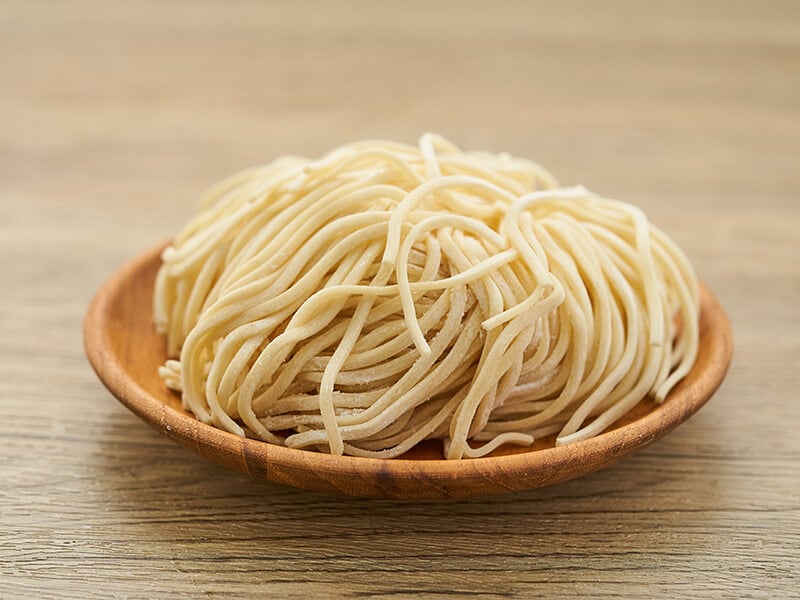
2. Shirataki Noodles
In Japanese, “shirataki” refers to “white waterfall”. This name partly comes from the long, beautiful white noodle strands. In addition, 97% of it is water(1).
This is a unique noodle type that contains a very small amount of calories despite being incredibly filling. Shirataki noodles are also high in fiber and can help you lose weight.
The texture of these noodles is fairly elastic. Moreover, they do not contain many flavors inside. At the stores, you will find them in dry packages or stored in plastic bags with water inside. For water-packed noodles, you must drain and rinse them in cold water.
Sometimes, they come in cans, like these Miracle Shirataki Noodles. To cook them, simply put these noodle strands in boiling water and simmer for 6-7 minutes.
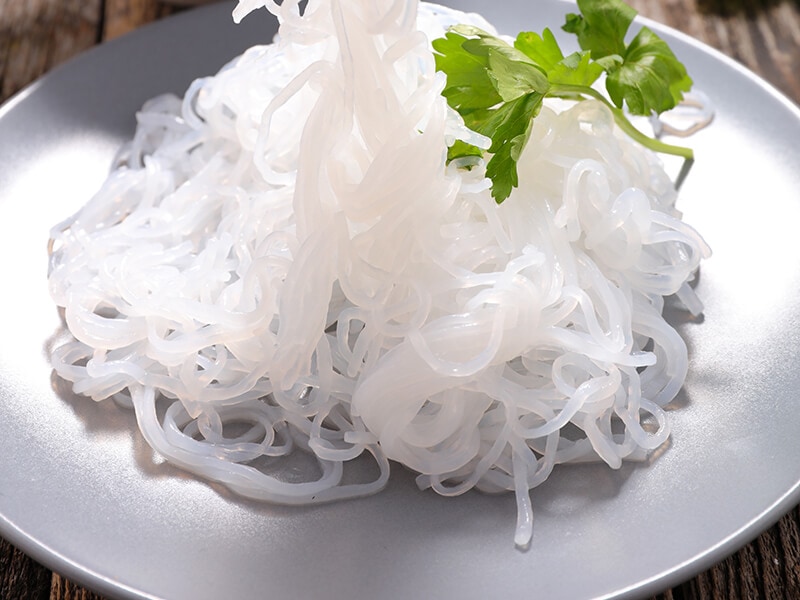
3. Tofu Shirataki Noodles
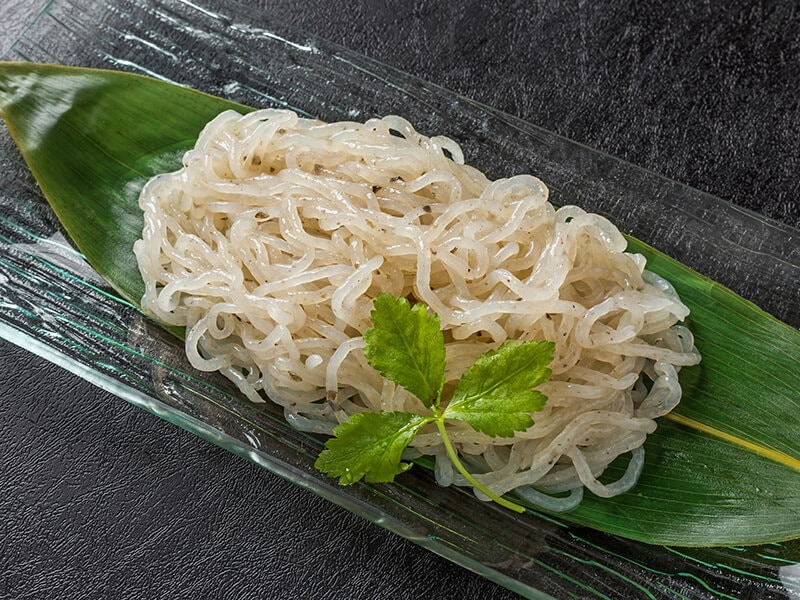
This type of noodle originates from shirataki noodles. By mixing shirataki and tofu, you can have another noodle variety with bouncier, smoother strands. You can use this extremely versatile noodle type with a neutral flavor and a chewy texture to make any dish you want.
Tofu Shirataki noodles are available in round-shaped strings like spaghetti or in flat shapes like these House Foods Tofu Shirataki Noodles. In Asian markets, you can find fresh, dried, or frozen noodles of this type.
Fresh noodles do need rinsing before cooking. To prepare dried ones, soak them in a solution of water and baking soda for 15 minutes, then drain and rinse them.
Here is a quick instruction on how to prepare tofu shirataki.
4. Egg Noodles
Egg noodles are probably the most multiform type in this list. They are in round shapes with different thicknesses or are flattened in various widths. Asian countries usually go for long flat noodles, whereas people prefer shorter and thicker ones elsewhere, like the German variety Spätzle.
The noodles comprise flour, water, and salt like any other noodle type, but with an addition of eggs. This ingredient gives them a gorgeous golden color. Noodles of this type interweave a bit of salty and savory flavor with the rich taste of eggs.
Dried egg noodles should be cooked in boiling water for 3-6 minutes to rehydrate before you start to cook them. Fresh noodles, however, only need 1-3 minutes.
There are many types of egg noodles on the market, such as hokkien, Chinese lo mein, or chow mein. Annie Chun’s Organic Stir-Fry Noodles is specially made for stir-fries. These Hokkien noodles include high-quality ingredients and bring you authentic Asian flavors.
If you are keen on a chewier version, you can search for products from Wel-pac. This company offers Lo Mein Egg Noodles and Chow Mein Stir-Fry Noodles, both of which are perfect for your stir-fries.
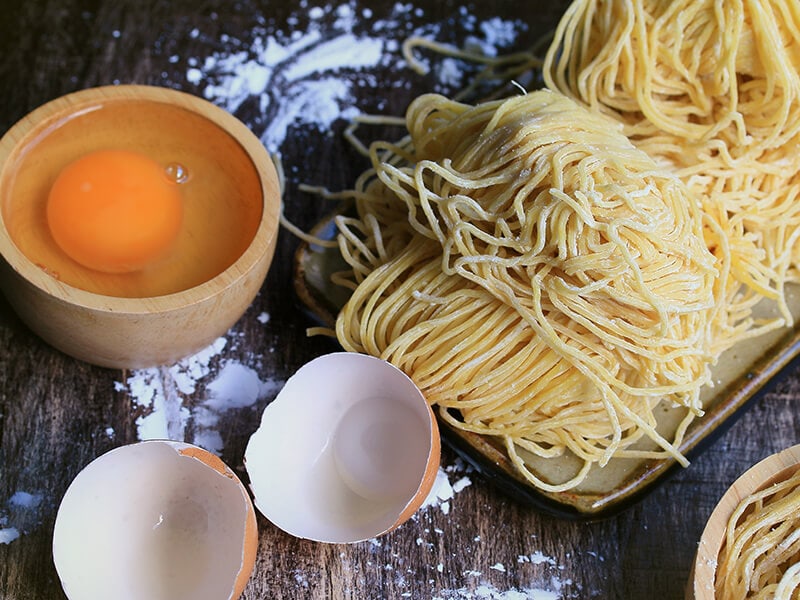
5. Rice Noodles
Rice noodles are primarily made of rice flour and water. Nevertheless, some makers may add cornstarch to them so that they can be chewier and clearer.
This noodle type is available in different varieties. The most common form is dry, thin, round sticks. Rice noodles have a bland taste, just like their namesake ingredient.
Compared to egg noodles, they have fewer calories, protein, and fat. You can pair them with soups, curries, or stir-fries.
To prepare them, soak the noodles for 15-25 minutes and then add them directly to your stir-fries. They only need 1-2 minutes to cook. Yet rice noodles are prone to break easily, so if you choose them for stir-fries, make sure to toss them in the final step.
Most noodles of this type are gluten-free(2) and vegan-friendly, allowing them to approach larger segments of customers. A convincing example is Thai Kitchen Gluten-Free Stir Fry Noodles.
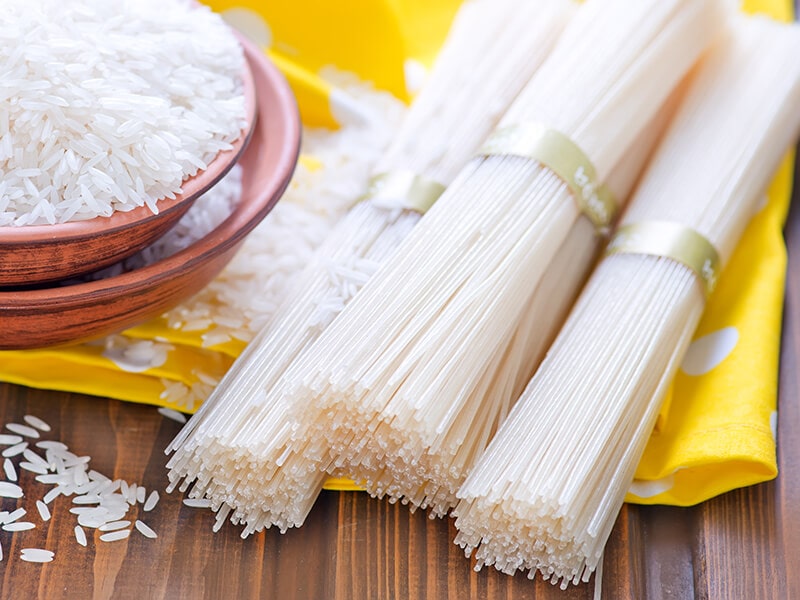
6. Glass Noodles
Glass noodles – also called cellophane or bean thread noodles – are long, viscous noodle strands.
They are made from vegetable starch like mung bean (the most common variety), sweet potatoes, or peas. Although their name contains the word “glass”, not all versions of this food are translucent.
This noodle type can be found in most soups, stir-fries, or hot pots in China and Southeast Asia. Having a neutral flavor, glass noodles mostly get flavors from other food that you combine with them.
Not only that, these noodles are extremely easy to deal with. Since they usually come in dried bundles, just like these Assi Sweet Potato Noodles, you will need to soak them before cooking.
Preparations require putting your noodles in a bowl or a heat-resistant container, then pouring boiling water onto them. Let them soak until they get soft, maybe for around 5-15 minutes. You will not need this step if you are making deep-fried noodles.
When glass noodles are well cooked, they have a slippery, chewy texture. That is why they are perfect for your stir-fries.
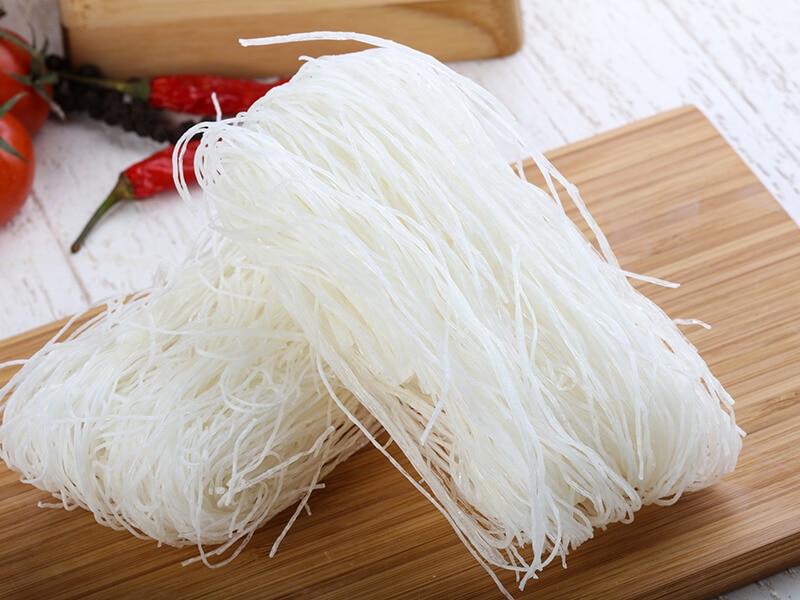
7. Somen Noodles
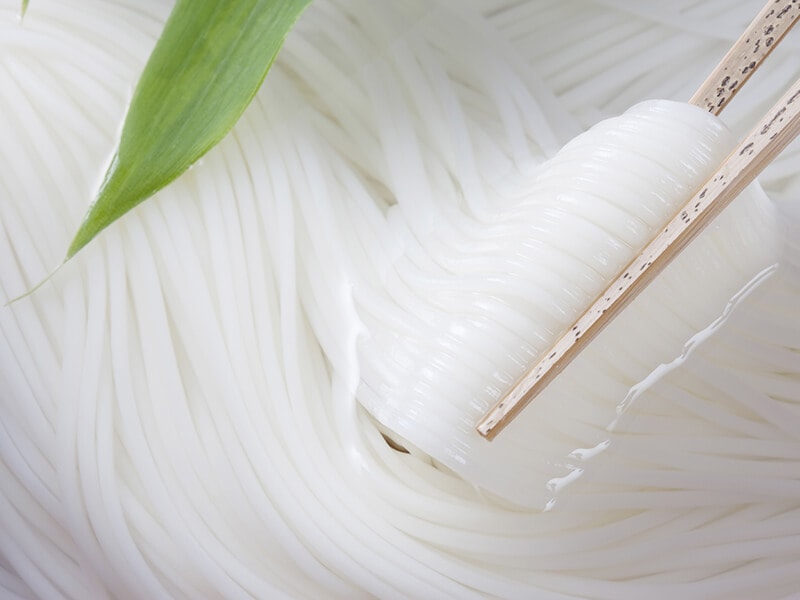
This extremely thin noodle type appears in pale white color and has a mild flavor, generally tied into dried bundles.
Traditionally, to make somen noodles, people use their hands to stretch them first. Next, they make use of bamboo sticks to stretch noodles until they reach a certain length. This process allows somen to have a distinctively chewy texture.
You also want to process them first before use. Just simmer them in boiling water for 2-4 minutes and then drop them in a bowl of ice. Other than stir-fries, somen can pair well with sauces or broths. Give Hime Dried Somen Noodles a try!
You still don’t know what is flowing bamboo somen noodles? Find out now!
8. Soba Noodles
Soba noodles are nutty, earthy, and a bit thicker than somen noodles. This gluten-free variety has a denser texture than its counterpart.
The color of soba noodles ranges from beige to brown, though they may have a green color of ground green tea. Soba noodles are a good source of nutrients like protein, fiber, and carbohydrates.
The basic preparation for soba noodles is similar to somen noodles. However, since they are thicker, the amount of cooking time would be longer.
Commonly, soba noodles are sold in dried noodle strands, like this Hakubaku Organic Soba, but in Japan, you can find fresh types in the stores.
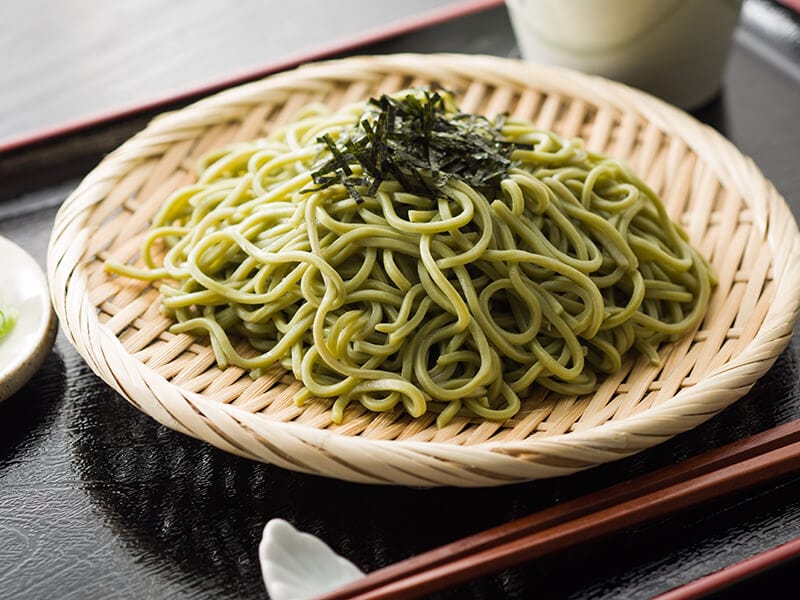
9. Udon Noodles
Salt, water, and wheat flour are the main components of udon noodles. They are known for their slippery texture and mild, pleasant flavor. While dried udon noodles are convenient and have a long shelf life, fresh or frozen noodles are generally thicker and chewier.
Cooking fresh udon noodles is also simpler. You only need 2-4 minutes to boil them. Dried udon noodles demand a more complex preparation process to fully attain their potential.
It is best to match udon noodles with udon sauce for the ultimate stir fry. Udon sauce is a mixture of dark soy sauce, mirin (Japanese rice wine), vinegar, and some other condiments. This sauce adds a slightly sweet and rich flavor to the mild taste of udon noodles.
If you want a safer and more convenient option, look for these KA-ME Udon Stir Fry Noodles. Ready to eat in less than 90 seconds, KA-ME noodles will save your preparation time yet ensure an authentic flavor.
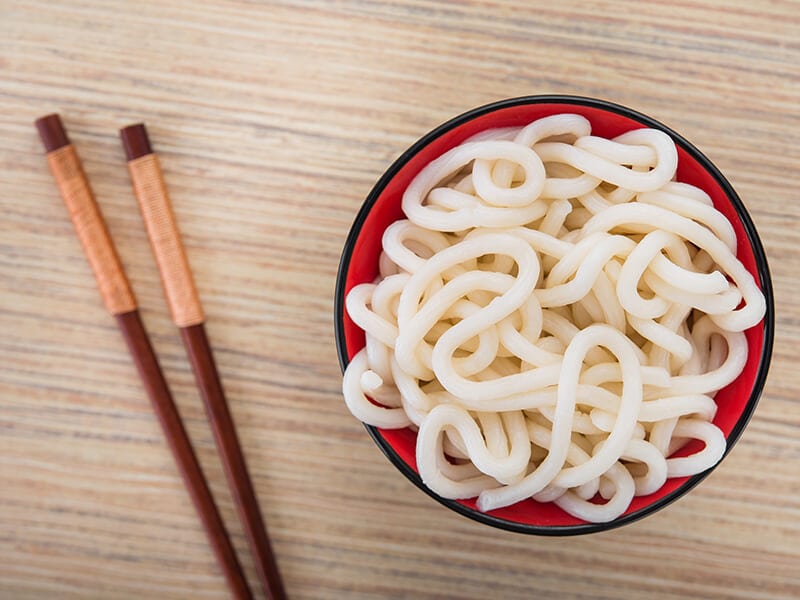
10. Yakisoba Noodles
Yakisoba noodles are a product of wheat flour, water, and kansui. The last one is an alkaline solution that maintains the springy texture of noodles as well as gives ramen noodles their iconic flavor.
Despite having a gold color that resembles egg noodles, Yakisoba noodles are a different type. They are often accompanied by a sweet and savory sauce similar to Worcestershire sauce.
These Japanese noodles are round and much thinner than udon noodles. They are specifically good for stir-fries and are not usually eaten with broth. As for the taste, their flavor is similar to ramen but sweeter.
The process of preparing yakisoba is very simple. If they are fresh noodles like these Hakubaku Noodles, 1-2 minutes in boiling water is sufficient. In case they are dried noodles, change the amount of time to 5-7 minutes.
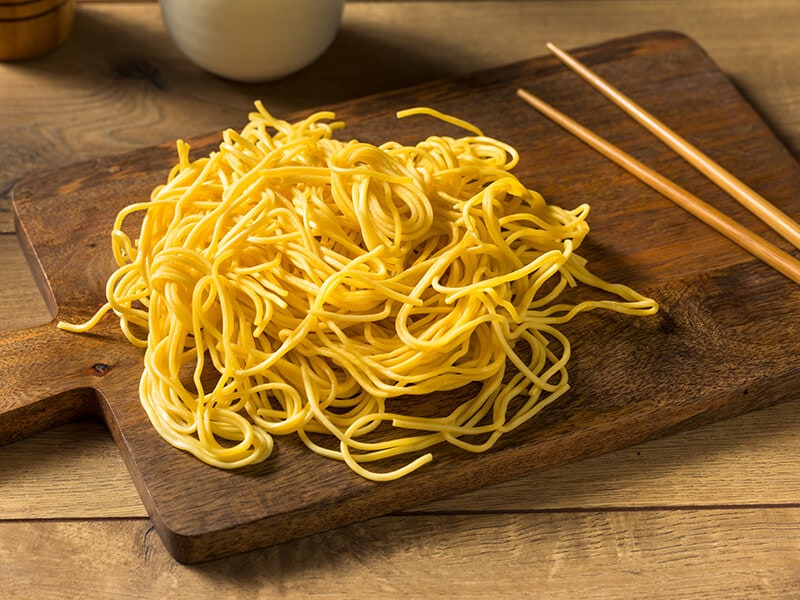
How To Preserve Cooked And Uncooked Noodles
Most noodles sold in supermarkets or stores are dry, so you do not need to do much. Just place them somewhere cool and dry. That said, you may want to check for their expiry date because unused noodles will grow stale after a few months.
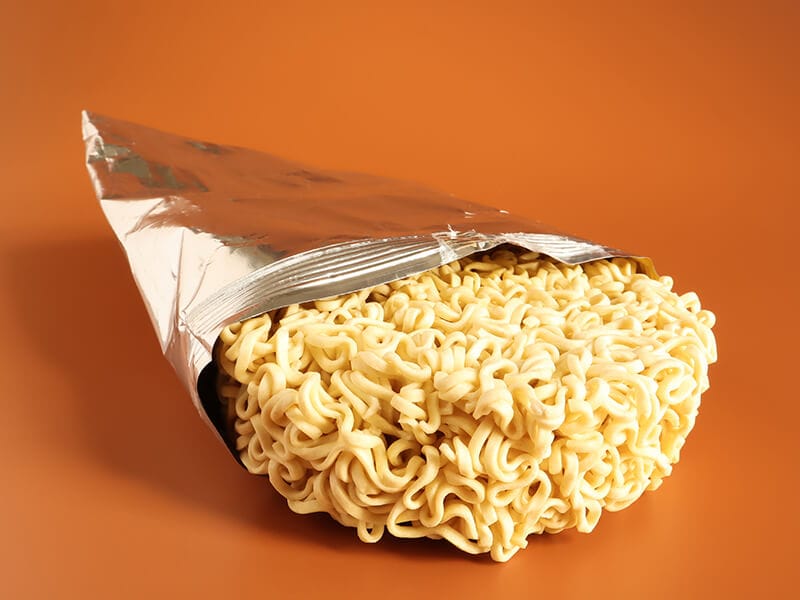
Cooked Noodles
If you have leftover noodles, you must store them in closed containers and put them in your fridge. Cooked noodles can survive in the fridge for 3-5 days.
Still, it is better to eat them within 2 days. After that, your noodles lose most of the flavor and are likely to become moldy. Other than that, you also need to reheat them before consumption, too.
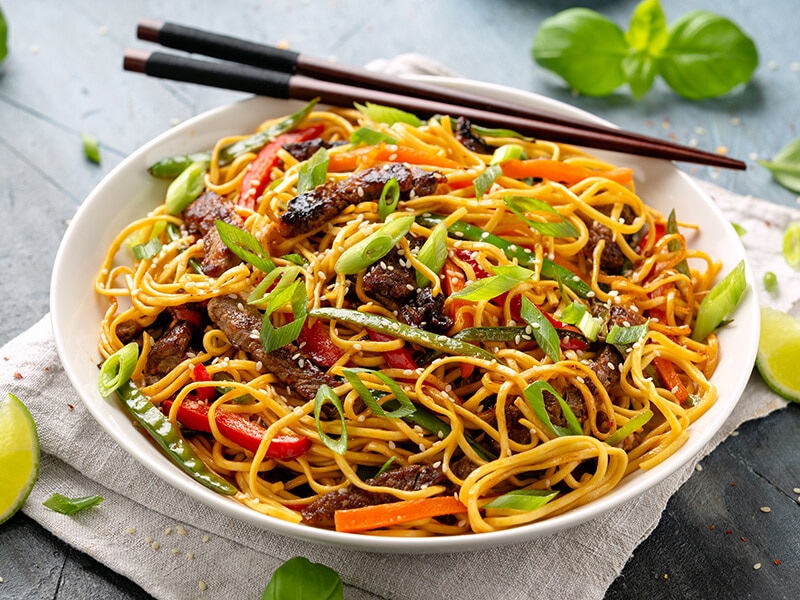
Fresh Noodles
To store fresh noodles, you can sprinkle flour all over them to prevent stickiness. If your noodles are not completely dry, spread them on a wire rack until they dry out.
Next, put them all into an airtight bag or container and store them in your fridge. A noteworthy thing to mind is that you should choose a place in your fridge where the temperature does not fluctuate much.
Thus, the fridge door is not a good idea. The back of the fridge is also a place where you would not want to store your noodles. As this place is exposed to cold air, it can make the noodles soggy.
Storing noodles in the freezer is not much different. After covering them with a flour layer and drying them, you will need to put them in an open container and leave them in the freezer for several hours.
This allows the noodles to harden and prevents the slightest chance of stickiness. Then transfer your noodles to another airtight container, and you can keep them for up to 4 months.
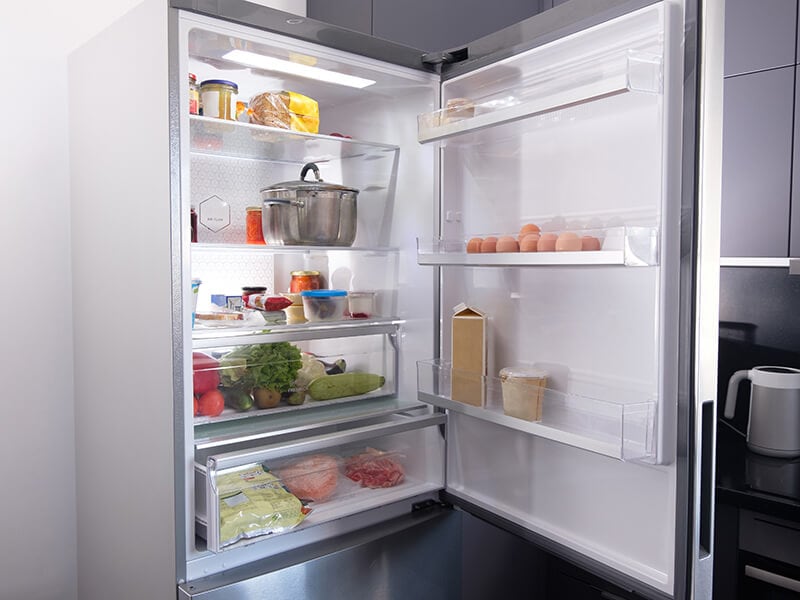
4 Stir Fry Recipes With Different Types Of Noodles
Are you hungry yet? If you have some noodles in your kitchen, don’t let your craving go on. Try these stir-fry recipes now, and you will want to enjoy them every day!
10 Minutes Chili Garlic Udon Stir Fry
Within 10 minutes, you can make spicy and flavorful stir-fried noodles. This is the simplest recipe and also perfect for vegetarians as it contains no meat. All you need is vegetables, such as carrots, cabbage, red pepper flakes, etc.
The Asian stir-fried veggies are fantastic for a meatless dinner.
Prawn And Noodles Stir Fry
This stir fry can easily be found in almost every Asian restaurant. Prawns and egg noodles are a fantastic combination for a quick and nutritious meal. No one is too busy to make this stir fry because it only takes you 15 minutes in total.
Thai Drunken Noodles
Also known as pad kee mao, this stir fry is very popular in Thailand. Thai dishes always stand out for their vibrant color and bold flavor. If you are a fan of Thai food, the last thing you want to do is to miss this recipe!
Stir Fry Cabbage With Glass Noodles
Glass noodles and cabbage stir fry is a budget-friendly recipe. This dish is also a famous street food in China and Hong Kong. It will not take you more than 20 minutes to enjoy this tasty authentic stir fry.
FAQs
The more you read, the better you know! Feel free to look over these most-asked questions, and maybe, they can answer the queries that are in your mind right now.
Get Ready To Make Stir-Fries With These Noodles!
Noodles are extremely delicious and convenient compared to the short amount of time you spend preparing them. Most people prefer eating instant noodles, but sometimes, a little change in the cooking method will make your noodles tastier.
Stir-frying can go a long way to give you a flavorful meal. Making stir-fried noodles is not difficult at all, especially when you already know how to choose the best noodles for your dishes.
Have you ever made a stir-fry with the noodles listed above? I bet you have some experience to share. Why don’t you leave a comment and let other readers know your stories? Do you find this post helpful? If you do, don’t hesitate to share it with your friends and family!
References
- healthline.com (2018), Shirataki Noodles: The Zero-Calorie ‘Miracle’ Noodles
- healthline.com (2021), Rice Noodles: Calories, Recipes, How To Cook, And More

